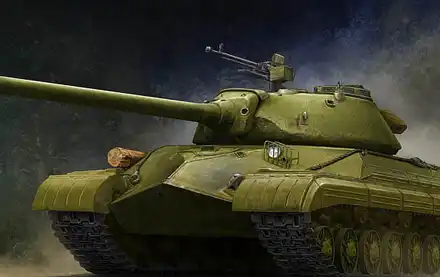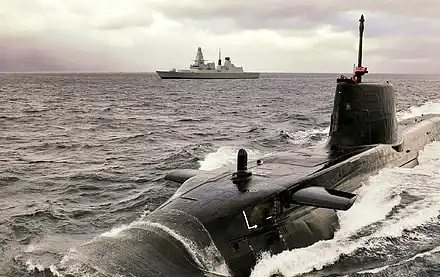




Cesare

The TAI Kaan, also known as the TF ("Turkish Fighter") and MMU (Milli Muharip Uçak), is a fighter aircraft currently under development by Turkish Aerospace Industries (TAI) and BAE Systems. The aircraft is designed to replace the Turkish Air Force's F-16 Fighting Falcon and be sold to other countries.
The TAI Kaan is an all-weather, twin-engine air superiority fighter with stealth capabilities, making it highly effective in combat situations. The aircraft is expected to have advanced avionics and weapons systems, making it a formidable opponent.
Recently, the prototype TAI Kaan underwent successful taxiing and ground tests, which provided valuable data on the aircraft's ground handling and systems. Two days later, a ceremonial rollout marked a significant milestone in the development of the fighter jet.
The development of the TAI Kaan is a significant step for Turkey, as it aims to replace the F-16 and complement the F-35 Joint Strike Fighter with a domestically-produced aircraft. The collaboration with BAE Systems, the largest defence contractor in Europe, is expected to bring valuable expertise and resources to the project. The successful development and deployment of the TAI Kaan will establish Turkey as a major player in the global defence industry.
The KAAN Fighter Jet is a significant stride for Turkish air dominance. Embarking on a new era in aerial warfare, the Turkish Aerospace Industries developed the KAAN Fighter Jet with strategic inputs from BAE Systems. The fighter jet boasts stealth capabilities, cutting-edge avionics, and acrobatic manoeuvrability. Designed to eclipse Mach 2 and command an impressive combat radius of around 1,000 nautical miles, KAAN sets a benchmark for future Turkish fighter jets. It is equipped with an arsenal of air-to-air and air-to-surface missiles along with precision-guided munitions.
The KAAN's maiden flight showcased the jet's potential, achieving an altitude of 8,000 feet and a speed of 230 knots.
Development
The Turkish government's decision to develop a new national air superiority fighter in 2010 marked a significant milestone in the country's defence industry. The project aimed to replace Turkey's existing fleet of F-16s and strengthen its defence capabilities by designing, developing, and manufacturing a next-generation aircraft that would meet Turkey's unique requirements.
In 2011, the Turkish government signed an agreement with Turkish Aerospace Industries (TAI) to conceptualise basic capabilities. TAI and TUSAÅž Engine Industries (TEI) were tasked with leading the design, entry, and development processes of the fighter jet, which involved studying the cost of the fighter and investigating which mechanical and electronic systems would be employed.
TAI released three potential airframe configurations for the new fighter jet in 2015, including the FX-1, FX-5, and FX-6. After careful consideration, Turkish Prime Minister Ahmet DavutoÄŸlu announced on January 8, 2015, that the TF-X would be a twin-engine fighter, and the final decision was made to continue with the twin-engine FX-1 configuration.
On March 13, 2015, the Turkish Undersecretariat for Defence Industries (SSM) officially issued a Request for Information (RFI) to Turkish companies capable of performing "genuine design, development, and production activities of the first Turkish fighter aircraft to meet Turkish Armed Forces' next-generation fighter requirements." The contract for the design and development of the fighter was signed between the SSM of the Ministry of Turkish National Defence and Turkish Aerospace Industries Inc. on August 5, 2016.
The Turkish government allocated $1.18 billion to Turkish Aerospace Industries to acquire the necessary technologies and infrastructure for the aircraft's design, testing, and certification. The project aimed to develop a completely independent domestic platform, not in partnership with Korea, Sweden, Brazil, or Indonesia.
The Russian state-owned defence company Rostec expressed its willingness to join the TF-X program during the 2018 Eurasia Air Show, and some Russian companies, including the United Engine Corporation, have also stated that they were ready to provide technology for the TF-X engine.
In December 2015, Turkey's Undersecretariat for Defence Industries (SSM) announced that it had chosen BAE Systems of the United Kingdom to assist with the design of the nation's next-generation air superiority fighter. Rolls-Royce offered technology transfer for the engine and joint development of a derivative for the TF-X program. During the visit of British Prime Minister Theresa May to Turkey in January 2017, BAE Systems and TAI officials signed an agreement, worth about £100 million, for BAE Systems to provide engineering assistance in developing the aircraft.
The TF-X project marked a significant milestone in Turkey's defence industry, as the country aimed to develop a next-generation aircraft that could meet its unique requirements and strengthen its defence capabilities. The project involved careful consideration of airframe configurations, close collaboration between Turkish Aerospace Industries and the Turkish government, and partnerships with international defence companies to provide the necessary expertise and infrastructure.
Design
The development of the TF-X program was a complex and multi-faceted effort that involved numerous companies and partnerships. One of the key areas of focus was the engine, and several options were considered to find the best fit for the aircraft's unique requirements. The EJ200 engine, which is used in the Eurofighter Typhoon, was one possibility. Another option was TRMotor Power Systems Inc., which was established in 2017 by BMC, TAI, and SSTEK. TusaÅŸ Engine Industries (TEI), a local partner of General Electric, was also involved in the engine development phase.
After resolving previous disputes, Kale & Rolls-Royce announced in March 2022 that they had reached an agreement to use the F110 engine for the prototypes of the TF-X. This decision was based on the importance of Turkey developing an independent domestic platform and possessing intellectual property rights.
The Defence Industry Agency has now published an invitation to tender for the domestic development of the engine, with proposals submitted by TRMotor and a consortium by Kale Group and Rolls-Royce. The selection of the engine developer will be a crucial step in the TF-X program, as the engine is a critical component of the aircraft. It will determine the performance and capabilities of the TF-X, including its range, speed, and manoeuvrability.
To ensure the TF-X's success, the program set forth an extensive list of requirements in June of 2021, which included improvements in aerodynamics and propulsion, such as supercruise capabilities, low observability, sensor fusion and autonomy, improved data-link capabilities, high precision stand-off weapons. The airframe of the TF-X will feature internal weapons bays and low radar cross-sectional density, making it a fifth-generation fighter jet.
TAI's Advanced Carbon Composites fuselage facility will develop the aircraft's fuselage, with a focus on developing an Advanced Carbon Composite fuselage for the TF-X. A new lighter carbon composite thermoplastic is also being developed specifically for the TF-X fuselage.
To ensure advanced radar and sensor capabilities, ASELSAN is developing an active electronically scanned array radar for the TF-X. This radar will use gallium nitride technology and will be capable of providing advanced and internal multi-spectral sensors. The aircraft will also feature upgraded variants of Aselsan's avionics and equipment, including a radar warning receiver, missile warning system, laser warning system, chaff and flare management system, dispensing system, and digital radio frequency memory-based jamming system.
The partnerships with international defence companies, including BAE Systems and Eurojet, provided the necessary expertise and infrastructure to ensure the success of the program. With these enhancements and capabilities, the TF-X program is poised to make significant strides in Turkey's defence capabilities and further establish the country as a global leader in aviation technology.
In conclusion
The KAAN Fighter Jet, a remarkable creation of Turkish Aerospace Industries, is a remarkable example of Turkey's determination to establish itself as a leading force in the global defence industry. This fighter jet is the embodiment of the nation's advanced engineering techniques and ambitious aspirations of defence autonomy. The KAAN's design goals include stealth capabilities, multi-role configurations, and cutting-edge avionics, making it a benchmark for future Turkish fighter jets.
Its successful maiden flight in February 2024, achieving an altitude of 8,000 feet and a speed of 230 knots, is a significant milestone in the fighter jet's development, marking the beginning of a new era of air power for the Turkish Air Force. As the KAAN project advances, it is set to revolutionize the field of aerial combat, with its advanced capabilities and modern design. The KAAN Fighter Jet's impact on Turkey's strategic military capabilities promises to be transformative, and the success of this indigenous military project is an inspiration to the nation's future endeavours.